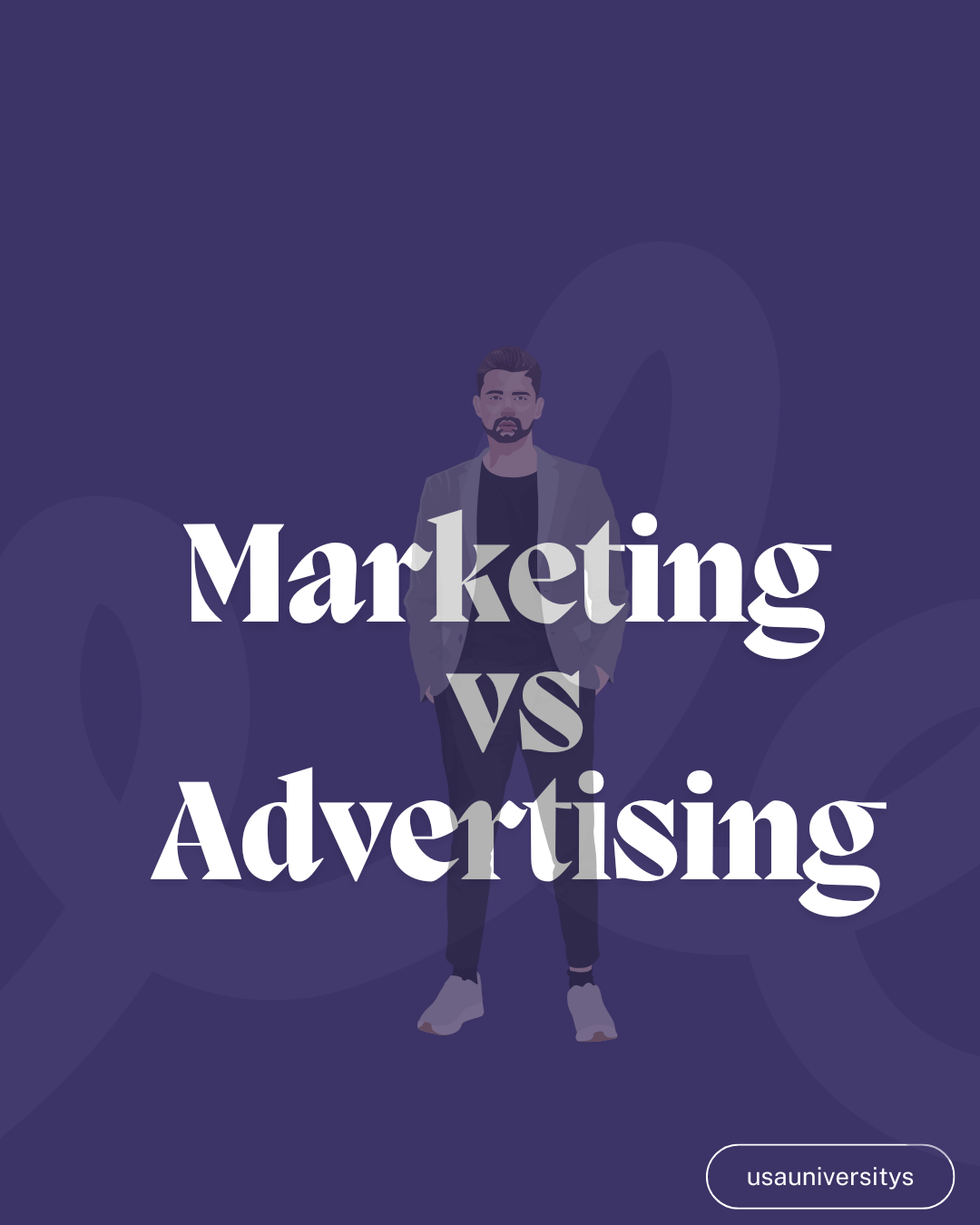Marketing vs Advertising
The commercial practice of marketing entails determining, forecasting, and satisfying customers’ demands. Advertising is a business paying to have its logo or messaging shown in a specific area.
Learn the distinctions between advertising and marketing and how each applies to contemporary business.
Modern companies use various marketing and advertising techniques to connect with potential clients and close deals as technology develops and becomes more significant. Marketing vs Advertising
Marketing and advertising are everywhere, from traditional media to digital marketing on the Internet and social media. The success of businesses of all sizes can be attributed partly to the efficacy of marketing and advertising tactics.

Despite their frequent interchangeability, marketing, and advertising are not the same thing. Marketing is the process of figuring out what customers need and how to effectively satisfy those requirements. Advertising, on the other hand, is the practice of using paid channels to promote a business and its goods or services. In other words, marketing includes advertising. However, the distinctions don’t stop there.
Why Is Marketing Important and What Is It?
The commercial practice of marketing entails determining, forecasting, and satisfying customers’ demands. With the aid of efficient marketing methods, businesses may maximize revenue while identifying the finest ways to service their clientele.
In business-to-consumer (B2C) marketing, consumers are the intended audience for marketing campaigns. In business-to-business (B2B) marketing, marketing efforts are focused on other companies. Marketing vs Advertising
When creating a marketing strategy, there are several crucial elements to consider in B2C and B2B initiatives. More precisely, astute marketers will assess:
Orientation: Also known as corporate culture or business philosophy, marketing orientation describes the tenets that underpin the company. Businesses typically concentrate on production, sales, marketing, or products.
Mix—When making decisions, a company’s marketing activities are guided by the marketing mix. The four Cs of a modern marketing mix are typically client/customer, cost, convenience, and communication. Marketing vs Advertising
Environment—Every element that could influence a business’s decision-making or marketing strategy execution is called the marketing environment. In keeping with this, businesses ought to think about their internal environment. It’s also critical to consider external elements, including the macro and micro surroundings.
Market—The traits of a business’s desired clientele are referred to as the target market. Research and segmentation initiatives can help identify the demographic and geographic characteristics that will aid a business in marketing and selling its goods or services.
The costs and benefits of different marketing techniques and tactics can be evaluated after thoroughly analyzing the market, environment, mix, and orientation. Given that a company can use marketing in various ways, this step in the planning process is crucial.

What Are Some Typical Marketing Types?
Print, mail, television, and the telephone were the four main channels used in marketing campaigns to reach consumers. Businesses can use any or all of these four channels to improve branding efforts and convey corporate messaging. Marketing vs Advertising
Effective messaging, advertising, and print and broadcast media constituted the dominating marketing strategy during the 20th century.
However, as the globe entered the twenty-first century, marketing tactics changed to consider the growth of e-commerce and the Internet. As life and business moved online, digital marketing revolutionized how companies communicate with their customers.
Social media and new channels allow for two-way communication between clients and companies. Particularly from a marketing perspective, contemporary technology has greatly facilitated data collection about consumer habits, requirements, desires, etc.
Digital marketing involves applying marketing techniques to electronic communication devices, like computers or smartphones. To contact consumers, digital marketing strategies frequently use search engines, email, websites, blogs, and other methods.
Social media marketing is a subcategory of digital marketing that reaches potential customers through social media sites like Facebook and Twitter. Businesses can benefit from earned media from people outside of their organization by using this marketing strategy. Influencer marketing is a developing aspect of social media marketing in which well-known users receive payment for endorsing a business’s goods or services.
Worldwide Marketing: Globalization and the Internet have enabled some of the world’s biggest businesses to establish worldwide brands. Global marketing allows these businesses to simultaneously contact customers at the local, regional, national, and international levels using a single strategy.
Relationship marketing relies on consumer satisfaction rather than intrusive tactics like advertisements or commercials. It aims to build a devoted and long-lasting clientele by utilizing tactics that assist in keeping and satisfying consumers.
Brand management aims to establish a connection between a company’s brand and its customers. To do this, a company must assess its goods and services, packaging, design, logo, and other components. Additionally, brand management evaluates the target market, direct competitors, and current clientele.
Product development is the process of turning a business possibility into a marketable good or service. Both new and old items can undergo development. Identifying customer wants and conducting market research and analysis are only two of the numerous marketing ideas necessary for successful product creation.









